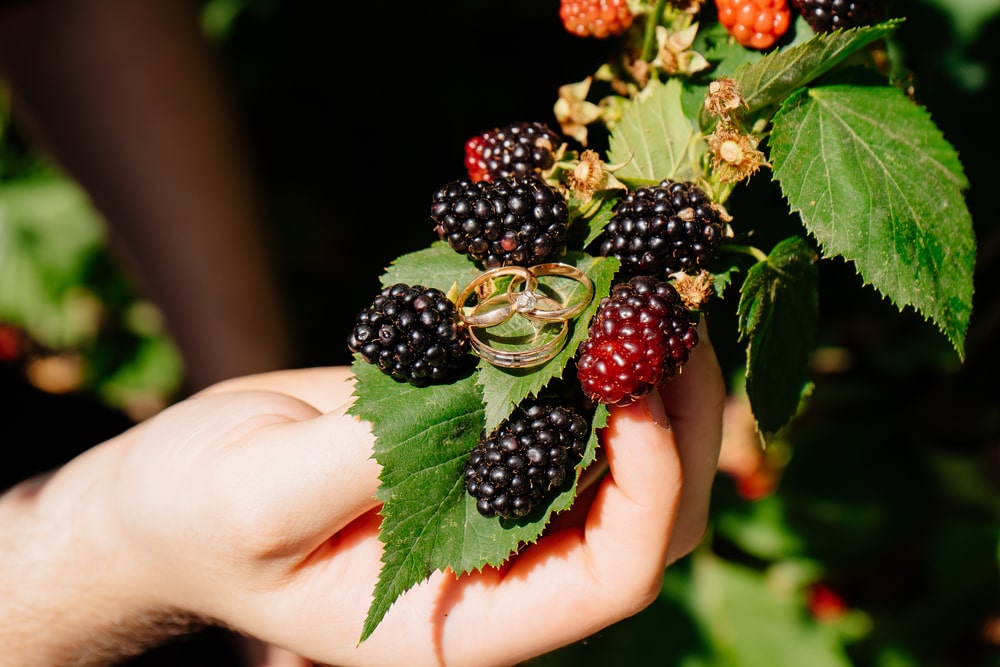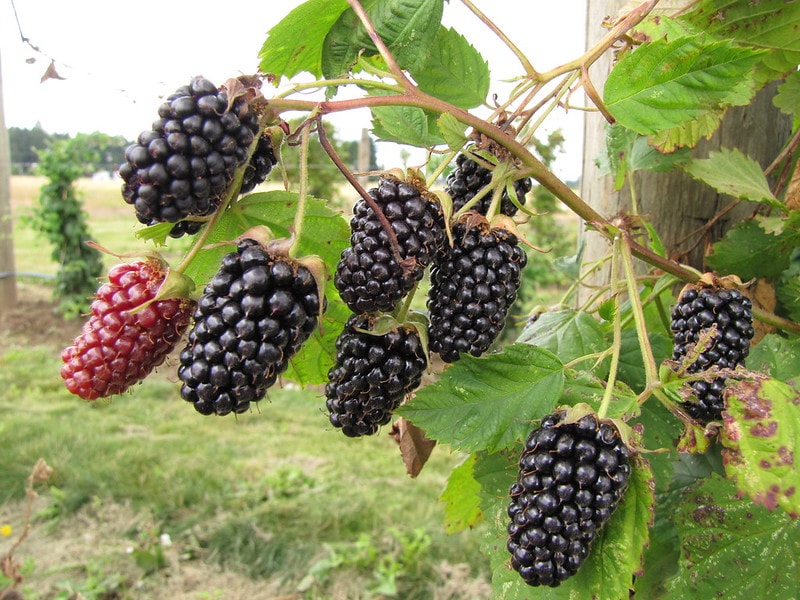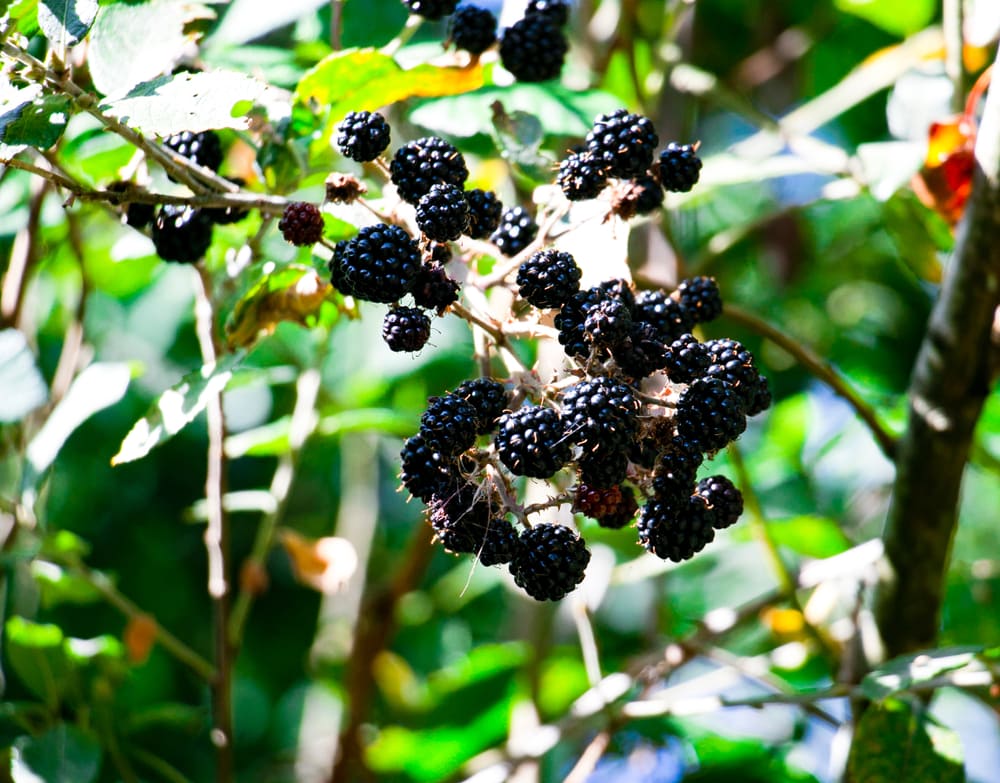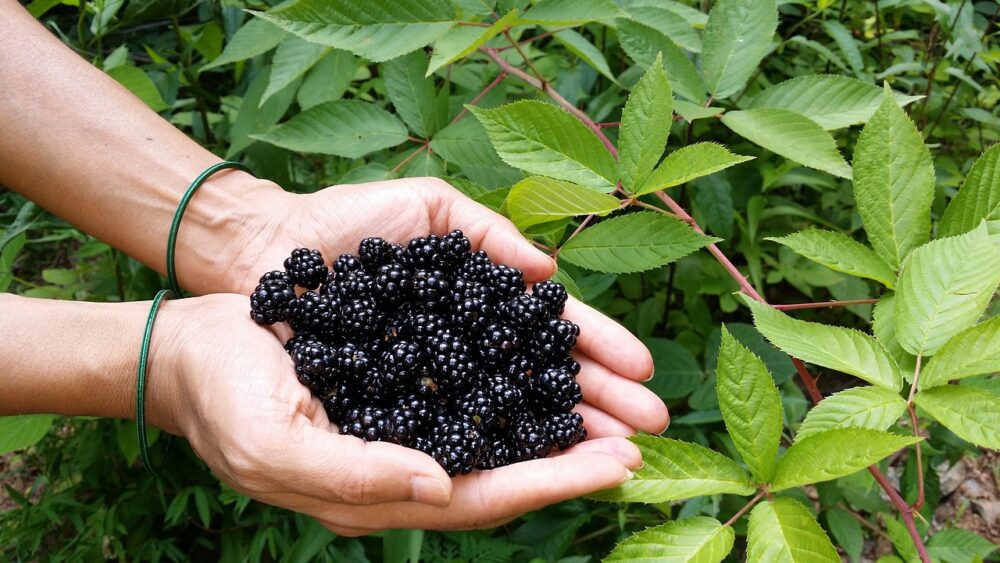10 Types of Blackberries (with Pictures)
-
Kristin Hitchcock
- Last updated:

When most people hear “blackberries,” they only think of a single kind. However, there are many different options—some of which are better for cultivating than others. If you are planning on planting some blackberries, then you need to consider what species is best suited for your area and needs.
While most blackberries do taste similar, how they grow can vary widely. Some are climbing varieties, while others grow into bushes. Some have thorns, and others do not.
Let’s look at some of the most common blackberry types to choose the best option for your garden.
The 10 Types of Blackberries
1. Apache

| Thorned: | No |
Apache blackberries are one of the most common—and for a good reason. These blackberries are completely thornless, which makes them easier to harvest and cultivate. Surprisingly, most blackberry plants still have thorns today, despite hundreds of years of human breeding.
These plants also produce very large berries, a great option for those looking to save their seeds. The berries are also very flavorful, and the yield tends to be high. Therefore, this plant easily checks the boxes for most gardeners.
Many gardeners love that Apache blackberries produce heavy crops. Therefore, you have to purchase fewer plants for the same yield.
2. Trailing Blackberries

| Thorned: | Yes |
Just as the name suggests, Trailing Blackberries produce some trailing shrubs. These blackberries come back year after year. Therefore, they are a great option for most gardeners. You don’t have to plant them year after year, unlike other varieties.
This plant produces climbing stems, which means that they grow upright. However, it also means that you’ll have to provide them with something to climb on. Therefore, you’ll have to put more work into growing them properly.
These plants are armed with small, hooked spines. Therefore, they can do quite a bit of damage if you aren’t careful. Often, you’ll have to handle them with gloves.
3. Arapaho
| Thorned: | No |
Similar to Apache berries, this variety grows erect and upright. Therefore, they are easier to cultivate and take up little room. They are also thornless, so you won’t have to worry about getting poked. Overall, they are much easier to handle than other options out there.
This plant also produces very large blackberries. They ripen very early, which means that harvest time comes sooner than for most plants. Plus, the berries are also quite firm. For this reason, they work well in jams and syrups. Many like the sweet taste, and their firmness makes them last a bit longer.
4. Black Diamond

| Thorned: | No |
These blackberries are a hybrid of a few different types of blackberries. This variety was first bred in 2005, so it isn’t popular or common. However, their thornless nature and large fruit have made them increasingly popular. Therefore, you can find them at many shops and gardening centers.
These berries are made to harvest between July and August. The fruits are firm and very dark purple in color. They make great jams, though they taste good enough to eat right off the stem.
5. Columbia Star

| Thorned: | No |
This variety of blackberries is not thorned. Therefore, they are easier to handle than most options. However, they are trailing. For this reason, you will need to give them something to climb up for them to grow properly. Usually, a trellis will be needed for them to grow.
Preferably, this plant should be placed in an area with plenty of sunlight and well-draining soil. These plants can be a bit pickier than most options.
These berries provide a nice mix of sweet and savory flavors, and they are often planted by those who prefer a less-sweet fruit. These plants can grow up to 5 feet tall, so they require quite a bit of room.
6. Loch Ness

| Thorned: | No |
This type of blackberry is completely thornless. Therefore, it is well preferred to other thorned varieties. The fruit has a firm texture and a sweeter taste. Many people who make jams and syrups prefer this variety for this reason.
This plant does not produce huge flowers. However, the flowers are white and in big clusters and they do look pretty despite being smaller than most.
While these berries are often used for cooking, you can eat them off the plant.
7. Triple Crown
| Thorned: | No |
Like many preferred blackberry plants, Triple Crown plants are completely thornless. You don’t have to worry about getting poked or pricked when working with these plants. This variety was created by the U.S Department of Agriculture for home gardeners. This plant is typically added to fruiting cranes as it is semi-erect.
It does produce large blackberries that tend to be quite flavorful. Therefore, it works great for anyone that just wants a simple, basic plant to produce yummy berries. The berries are very firm and glossy. Their sweet flavor makes them work better for those that prefer sweet-tasting fruits.
8. Chester

| Thorned: | No |
Chester plants are completely thornless and produce some of the largest fruits. Therefore, they work great for those that want really big blackberries. They are also very suitable for eating raw without cooking. Their very sweet flavor also makes them great for jams and similar recipes.
The flowers are light pink, which also makes them a bit decorative. However, they are a bit different from the usual white flowers.
The berry that this plant produces is very sweet and juicy. It isn’t as firm as other options, though. Therefore, we don’t recommend it for jams or syrups.
9. Ark 45

| Thorned: | Yes |
Ark 45 comes from the University of Arkansas breeding program. Therefore, this is a newer variety that was mostly designed for northern areas, where the berries often ripen earlier. However, you can technically grow this berry in most places.
However, this berry is thorned. In other words, you’ll have to be fairly careful when handling the bush. Gloves are recommended for obvious reasons.
This blackberry belongs to the erect type. Therefore, it is more of a bush than a vine.
10. Marion Berry

| Thorned: | Yes |
Marion Berries are so popular that they are often considered their own species. However, they are truly a species of blackberry that was developed by the USDA. In blind taste tests, these berries almost always reign supreme. This berry was made by crossing two different types of blackberries, which makes it a hybrid.
These berries are mostly grown in Oregon, the state’s official berry. However, you can grow them in other areas, though they do best in northern environments.
Conclusion
There are many different types of blackberries. Unlike the varieties of other berries, blackberries differ a lot. They have different tastes, for instance. Some have thorns, and some even grow differently than others. Therefore, you have a lot of options to choose from.
We recommend looking at berries that grow best in your environment. Starting with a type made for your climate will start you off on the right foot.
After that, which option you choose is largely up to you. Your taste preferences and growing space will determine which variety is best for you.
Featured Image Credit: adonyig, Pixabay
Contents
